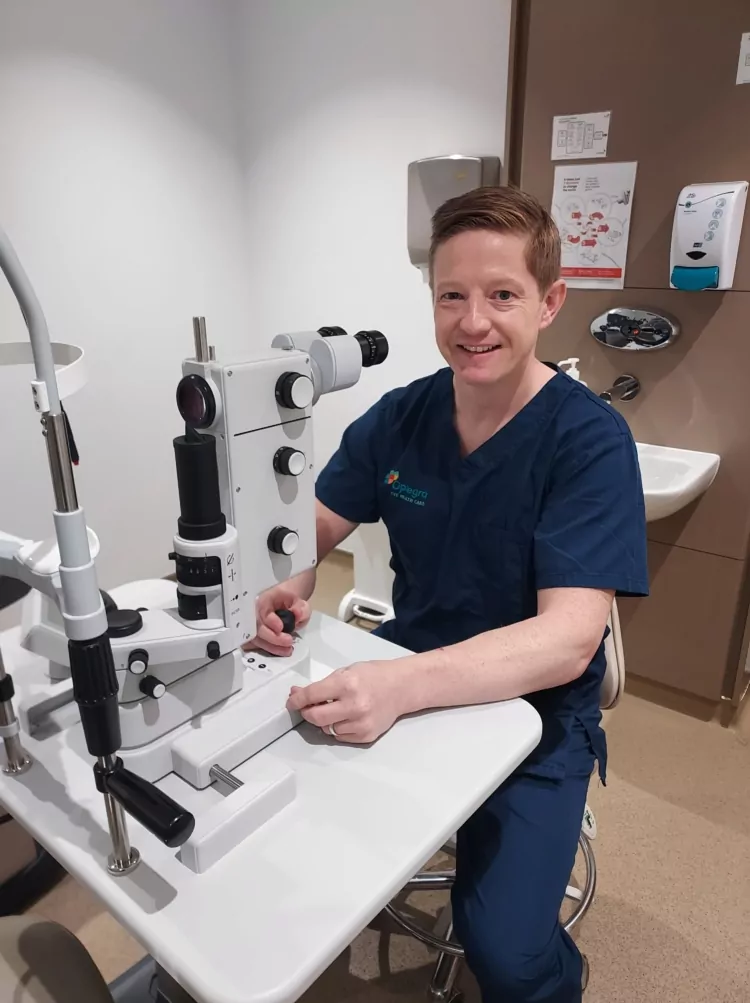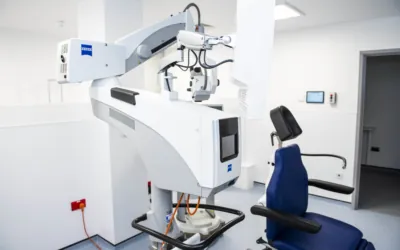Medically reviewed on 25-October-2023
The preparation for cataract eye surgery – like any other medical procedure – can be a little stressful. And having to make a decision on the type of cataract lenses you would like can sometimes feel a little bit overwhelming, especially given the many different lenses for cataract surgery.
Cataract Lenses: Which One is Best for You?
One of the many positive aspects of cataract eye surgery and lens replacement is that the results are permanent –you will only need to have it done once. But this also highlights the need for you to carefully consider your options before going ahead with surgery. Fortunately, at Optegra we are here to offer expert advice to help you choose the lens that is perfect for your unique vision goals and lifestyle. When you opt for surgery at one of our dedicated eye hospitals, one of our renowned surgeons will provide you with expert advice on the best lens options.
Due to advancements in ophthalmic surgery techniques and the technology used to design intraocular lenses (IOL) – the artificial lenses that are implanted during cataract eye surgery – you can now choose to have a powerful artificial lens that can dramatically improve your vision, inserted into your eye at the same time as having your cataracts treated.
Once upon a time this wasn’t possible because there was only one type of lens used in cataract surgery, which meant that although patients no longer suffered from cataracts after surgery, most still needed to wear prescription glasses or contact lenses.
There are now numerous different types of cataract lenses available, and the decision about which ones to go for should be based on what’s most important to you, and how much better you would like your vision to be after surgery.
Selecting the right intraocular lens (IOL) for cataract surgery is a crucial decision that depends on various factors, including your lifestyle, activities, and the severity of the cataracts. Different types of IOLs offer distinct benefits, so the choice must align with the individual needs and preferences of the patient:
Lifestyle and Activities: Patients should consider their lifestyle and daily activities. For example, individuals who engage in a lot of close-up tasks, like reading or computer work, may prefer a multifocal or accommodating IOL that can provide a range of vision for both near and distance tasks. On the other hand, those with an active outdoor lifestyle or who require excellent distance vision may opt for a monofocal or monofocal toric IOL that focuses on distance vision, possibly necessitating reading glasses for close work.
Cataract Severity: The severity of cataracts can also influence the choice of IOL. Mild to moderate cataracts may allow for more options, while dense or mature cataracts might limit the choices due to the need for specialized surgical techniques due to the inability of the surgeon being able to see clearly to the back of the eye.
Personal Preferences: Patients should communicate their personal preferences and vision goals with their eye care professional. Some individuals prioritise reduced reliance on glasses for various tasks, while others may be content with glasses for certain activities and prefer an IOL that optimizes their dominant vision needs. At Optegra patients will engage in a thorough discussion with their surgeon considering lifestyle, activities, cataract severity, and other preferences. This will help determine the most suitable IOL to achieve the best post-surgical vision and overall satisfaction.
Pre-existing Ocular Conditions: some ocular conditions such as glaucoma or advanced age-related macular disease may limit the lens options available to patients.

Lenses Used for Cataract Surgery
Standard Lens (Monofocal)
This type of lens replacement will let you see very clearly, but only at one distance. So if you choose to have a lens to improve your vision to help with short-sightedness, you may still need to wear glasses to see clearly at a near, and vice versa.
There are three different distances, and the one that you want to improve does not need to be comprised as the some of the advanced option IOLs (multifocals) will support all three areas of vision.
- Long distance – This area covers distance tasks such as driving or watching movies in the cinema.
- Middle distance – This type of distance is similar to the distance that you would view a computer screen from. If you work in an office job, and have to spend a large portion of your day looking at a screen, you may well benefit from improving your middle-distance vision. You may have noticed in the past that you suffer from headaches at the end of a long working day, and if this is the case for you then improving this vision could decrease the number of headaches you have.
- Short distance – if you like to read a lot, then improving your short distance vision could be a good option for you. This may be beneficial if you spend a lot of time reading paper documents for work.
Toric Lens
If you have astigmatism, this type of lens replacement will improve your vision at one specific distance. You may find that astigmatism blurs your vision slightly, so choosing to have this issue fixed with a toric lens could be beneficial to you.
However since toric IOLs are typically designed to correct astigmatism which will make objects appear sharper at near and far.
While toric lenses are a popular choice there are several enhanced cataract surgery techniques available to patients.
Multifocal lens
A multifocal lens replacement will help to improve your vision at a number of different distances, and could be helpful if you are constantly switching distances during the day.
For example, if you need to switch from making notes on paper in front of you, to looking at your screen, then on to looking at a presentation at the front of the room, you will want to be able to do so without having to change your glasses each time
Discover more about different types of lenses for cataract surgery and advantages and disadvantages between monofocal and multifocal lenses
Monovision
If you don’t like the thought of using a multifocal lens, you could opt for monovision. This is where a single vision lens for one distance is implanted into one eye, and a lens for a different distance is implanted into another, correcting problems with long-sightedness and short-sightedness. This means that you should be able to see both far and near, without having to get used to the differing focus of a multifocal lens.
This allows the patient to see objects clearly at different distances without the need for reading glasses. The brain adapts to this difference in focus, and many patients can effectively switch their visual attention between the two eyes based on the task at hand. For instance, the dominant eye might be set for distance vision, while the non-dominant eye is set for reading and close-up tasks.
Choosing the Right Lenses for Cataract surgery
If you’re still unsure about which lenses to choose, it may help to keep a note of everything you do during the day, including the number of times you need to change your glasses. This should give you an idea of the activities that are problematic for you, so when you meet with your consultant, you’ll have lots of useful information to help guide your decision.
Whichever lens you choose, cataract eye surgery combined with lens replacement can be life changing. The operation is quick and painless. And the results are almost immediate.
What next? Get in Touch for Free, No-Obligation Advice.
At Optegra, we have carried out over 35,000 cataract procedures in the last year alone, with an impressive success rate of 99.6%. This means almost all patients can drive without problems following their treatment. Learn more about cataract surgery at Optegra or book a no-obligation, free consultation for expert help and advice.
Download Information Pack
Learn more about how our latest vision correction techniques could improve your vision and change your life. Or Book Free Consultation.

By Author: Alex J Shortt
Mr Shortt is a leading ophthalmic surgeon and an expert in the fields of cornea, cataract and refractive surgery.
Medically Reviewed Date: 25th October 2023



